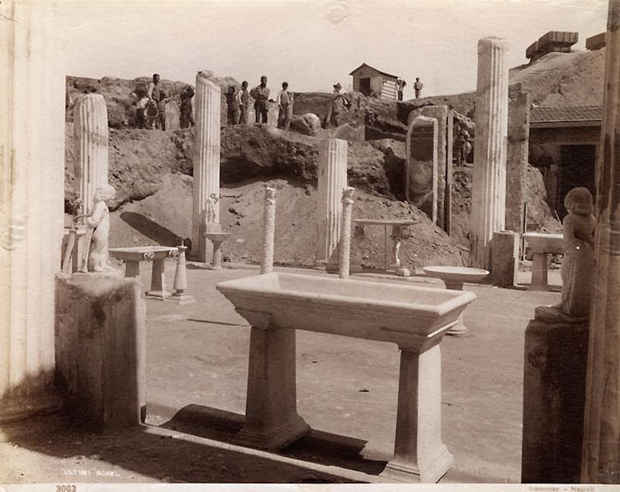“House of Vettii” Exhibition
Koenig & Clinton

This event has ended.
Taking its name from a house belonging to two brothers, Aulus Vettius Conviva and Aulus Vettius Restitutus, House of Vettii looks back at a visual culture that was inadvertently preserved by volcanic ash when Mt. Vesuvius erupted in 79. Born slaves, the brothers amassed enough wealth by selling wine to buy their freedom. As freedmen, they settled in Pompeii around 62, the same year that damage from an earthquake weakened the city’s posh reputation. In addition to driving away Pompeii’s wealthiest residents, the earthquake unexpectedly shook the city’s rigid social structure, providing new opportunities for those of a lower social status.
The House of Vettii diverges from the contemporary idea of a home in that, similar to the Roman domus, the house was much more a public manifestation of the owners’ identity. It was considered the owners’ forum, where delineations of public and private, personal and professional, were extravagantly indistinct. The brothers set themselves apart from other merchants, eschewing the common practice of using a street-facing room as a storefront. Instead, the rooms are resplendent in early examples of architectural conceit, trompe l’oeil, figuration, illusionistic windows, mannered interiors, and mythological imagery.
The House of Vettii’s baroque combination of all Pompeiian painting styles makes it emblematic of the Fourth Style. The House of Vettii also reveals the aspirations of a burgeoning middle class that used homes to express the combination of personal values and spectacle, to present inner contemplation and outward gregariousness simultaneously.
In the exhibition, the past presents a hypnotic sway in Sara VanDerBeek’s updated iconography, while works by Sigmar Polke and Philip Taaffe weave mythical symbols of protection and transformation. The interior of the Villa Borghese, documented by Candida Höfer, echoes these fables and provides symmetrical vistas through trompe l’oeil windows. Andreas Schulze and Matthew Porter frame illusory interiors, while Lilly Lulay’s collages construct landscapes. Paintings by Pam Lins and Ridley Howard employ elements of the quotidian while playing with perspective. Meanwhile, Olivier Mosset and Martin d’Orgeval make direct reference to the historic walls’ surfaces, as Georges Hugnet playfully exalts the erotic drawings that likely appeared in private quarters. The monumental is reconsidered by Greg Bogin and Carolyn Salas. Carissa Rodriguez leaves clues about mercantile machinations and Lily van der Stokker gives away the trade secrets. Conflating past and present, Lisa Oppenheim captures sublime beauty in the advent of destruction. With deft wit, Steven Baldi’s faux clock tricks time.
[Image: Giorgio Sommer, “La domus al momento della scoperta,” Most Recent Excavations, 1896]
Media
Schedule
from December 12, 2013 to January 18, 2014
Opening Reception on 2013-12-12 from 18:00 to 20:00